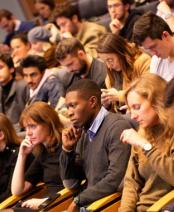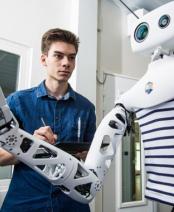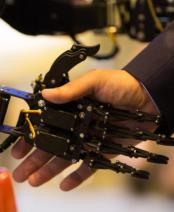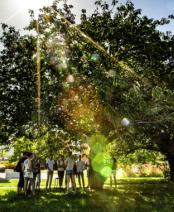Writing a popular science book during one's thesis, interview with Arthur Touati
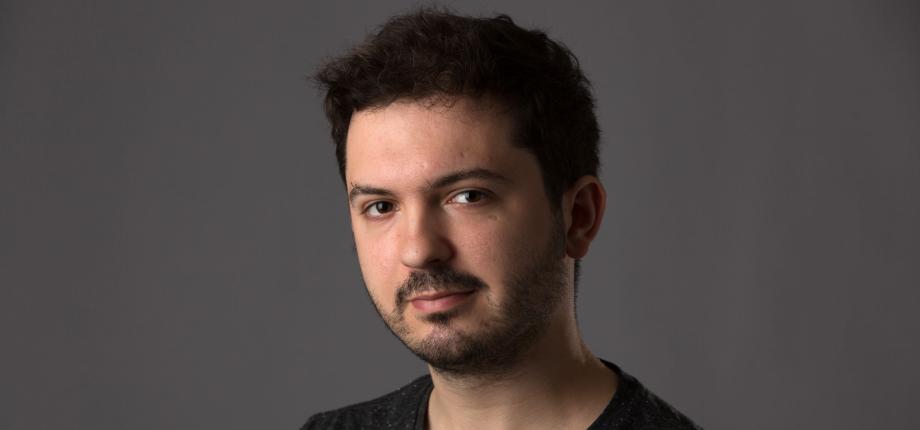
With the book Voyage au coeur de l’espace-temps, which you have just published with Stéphane d'Ascoli, you aim to popularise Albert Einstein's theory of relativity. Can you present it briefly ?
The theory of relativity revolutionised physics at the beginning of the 20th century, in particular the way in which gravitation was described. For example, in Isaac Newton's physics, developed in the 17th century, the Moon revolves around the Earth because an attractive force is exerted between these two objects. The exact expression of this interaction is known and all physics lies in this force between objects, even if we do not understand its exact origin. The theory of relativity, on the other hand, does away with the notion of force. According to it, the Earth and the Moon do not attract each other: they are moving in space-time, an object in its own, which is deformed in the presence of matter. In fact, the Moon goes in a straight line, but in a curved space! This curved, impalpable, four-dimensional space-time is certainly difficult to grasp, but it lies at the heart of relativity.
How do you talk about it with non-scientists?
Of course, the mathematics of relativity is complicated. But it is a geometric theory. And we all did at least some plane geometry in secondary school. So I try to appeal to people's intuition. The principles of relativity’s "non-Euclidean" geometry are less strict than those of plane geometry. Albert Einstein did not invent this geometry, mathematicians at the end of the 19th century did. Einstein had the brilliant idea of applying it to gravitation, but he was not totally alone. Mathematicians like Marcel Grossmann or David Hilbert also exchanged ideas with Einstein. By the way, I like to talk about history when I talk about science with non-specialists. What it revolutionised, how we got there, what it brought: the theory of relativity gave scientists a language to talk about the evolution of the Universe. This is what we call cosmology. The Big Bang, black holes... all these concepts that are mentioned in the book are consequences of this theory, and Einstein did not anticipate them at all.
Writing a popularisation book during your thesis is not common, how did the opportunity arise?
Stéphane d'Ascoli, a physicist friend of mine whom I met while studying at the Ecole Normale Supérieure (ENS), had already written a book for this publisher. The latter then suggested that he write another one on relativity. As this is the subject that intersects with both of our areas, we did it together, taking advantage of the two lockdowns where we lived in the same place to write. We also have two different approaches to relativity. Let’s take for example the equivalence principle, which occupies a central place in the theory. For Stéphane, it is a new way of saying that objects all fall at the same speed. For me, in mathematical language, it translates into the fact that there is a local coordinate system where the Christoffel symbols cancel out. I find this more concrete!
The theory of relativity is also at the heart of your work in mathematics. How did you come to do a PhD at Laurent Schwartz Mathematics Center (CMLS*) on this subject?
I discovered relativity between my first and second year of preparatory school. The centenary of relativity, in 2015, and then the discovery of gravitational waves –ripples in space-time– came at the perfect time for me. I knew when I arrived at ENS that I wanted to work on this subject. It is of course a physics’ theory, but Einstein's equations are also an object of mathematical study in their own right. There is a small community of mathematicians who are particularly interested in it, like Cécile Huneau at CMLS, whose contact was given to me by a professor. Our first meeting went well, the subject she proposed interested me, even if it took me almost a year to really understand it! Finally, I liked the environment of Institut Polytechnique de Paris. My PhD gives me the opportunity to teach by giving mathematics tutorials to Bachelor students. I really enjoy this and it goes very well with my research activity.
*CMLS: a joint research unit CNRS, École Polytechnique - Institut Polytechnique de Paris









